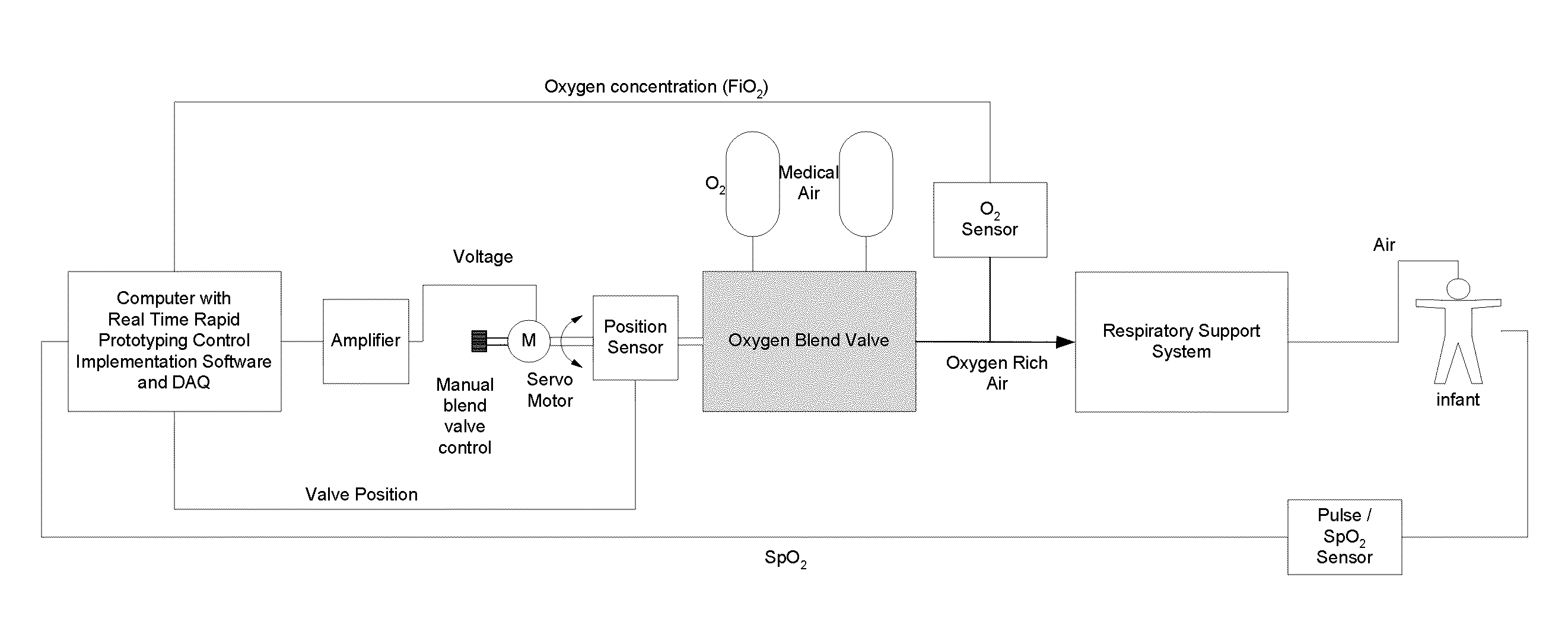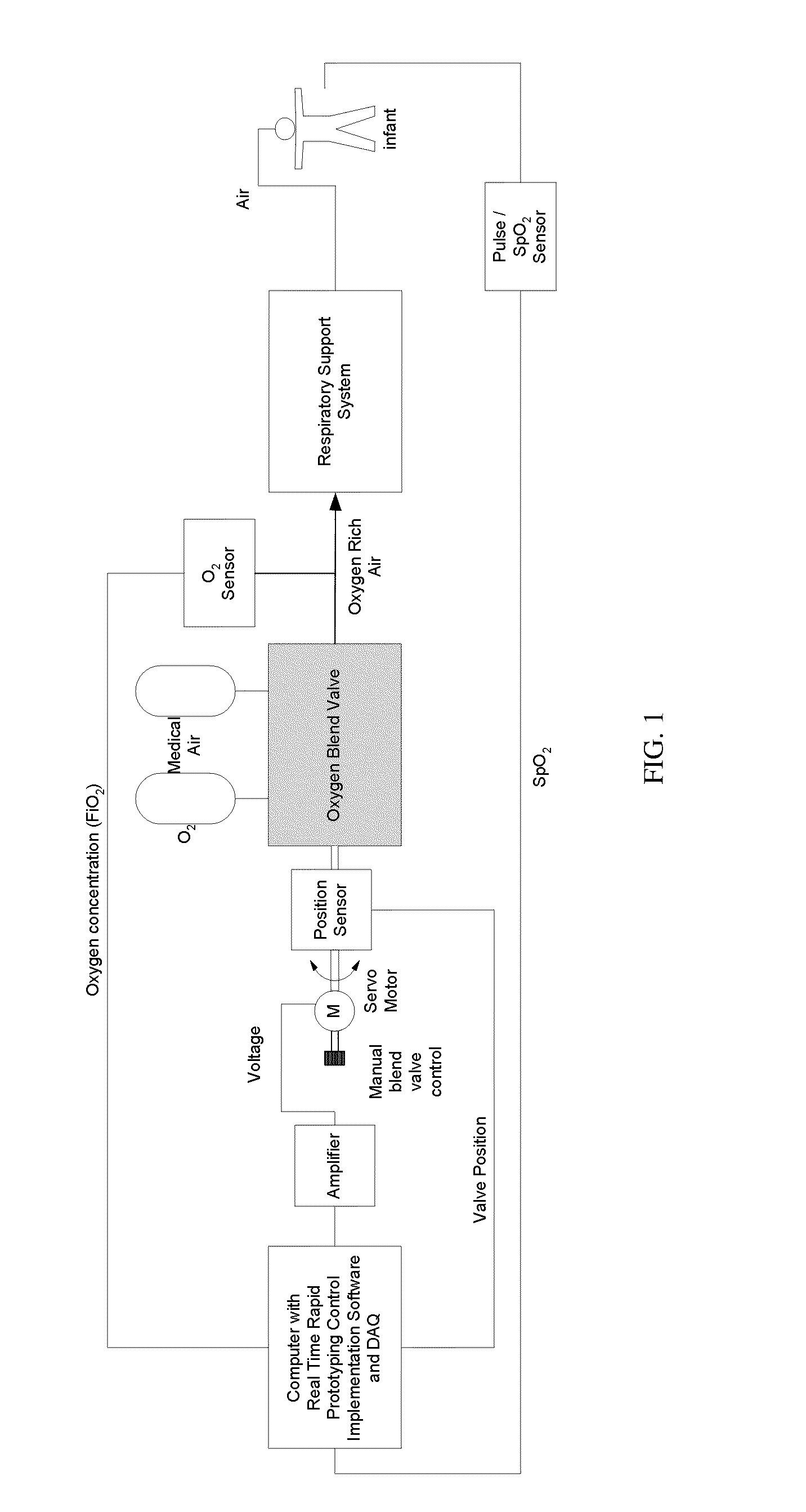Closed loop respiratory support device with dynamic adaptability
a technology of closed loop and respiratory support, applied in the field of new control systems, can solve the problems of rop, blindness and visual impairment in premature neonates, tissue damage in brain injury, etc., and achieve the effect of improving the system performance on a specific patien
- Summary
- Abstract
- Description
- Claims
- Application Information
AI Technical Summary
Benefits of technology
Problems solved by technology
Method used
Image
Examples
examples
1. Testing of Discrete ESO for Disturbance Estimation Performance
[0129]The discrete ESO was tested for disturbance estimation performance by using data from a model simulation. The continuous A, B, C, and D matrices of the continuous state space system were given as
[x.1d^]=A[x1d^]+Buy=C[x1d^]+DuA=[-1τGpτ00]B=[Gpτ0]
C=[1 0]
D=0
The state vector consisted of the estimated SpO2, x1, and the estimated disturbance, {circumflex over (d)}. Using the A and C matrices, the observability matrix was formed. The rank of the observability matrix was two which corresponded to the number of estimated states, so the discrete ESO was observable.
[0130]The performance of the discrete ESO for disturbance estimation was first tested with input-output data that was created using Simulink. A Simulink diagram that was used to create the input-output data can be seen in FIG. 11. The first test using data from the model simulation was with a first-order system with a constant system gain and a time constant. Th...
PUM
 Login to View More
Login to View More Abstract
Description
Claims
Application Information
 Login to View More
Login to View More - R&D
- Intellectual Property
- Life Sciences
- Materials
- Tech Scout
- Unparalleled Data Quality
- Higher Quality Content
- 60% Fewer Hallucinations
Browse by: Latest US Patents, China's latest patents, Technical Efficacy Thesaurus, Application Domain, Technology Topic, Popular Technical Reports.
© 2025 PatSnap. All rights reserved.Legal|Privacy policy|Modern Slavery Act Transparency Statement|Sitemap|About US| Contact US: help@patsnap.com



